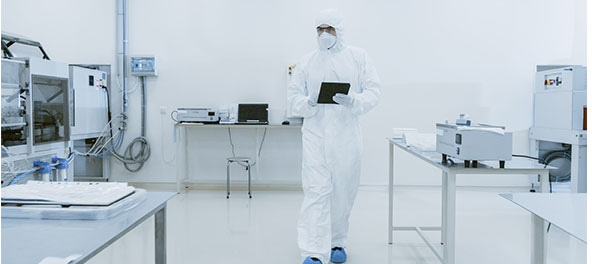Cleanroom maintenance is the key to ensuring your cleanroom continues to operate at peak form. Failure to conduct regular maintenance can have devastating consequences for your cleanroom.
For instance, in 2018, a NASA cleanroom was contaminated with fungi. While the fungi was found around the cleanroom, it was heavily concentrated around a filter that had been installed 40 years previously and not checked since.
As a result, many scientists who had worked in that cleanroom began to rethink years worth of discoveries and research.
This all could have been avoided if checking and replacing their filters were on a maintenance schedule – and we don’t want you to make the mistake.
Thus, we’ve compiled a few items to put on your cleanroom maintenance checklist.
Filter Maintenance
Your filter maintenance starts with your filter selection and air distribution strategy. The filters that are removing the fine particles are HEPA and ULPA filters. If they are being used without a solid pre-filter, they will be worn down by catching larger particles, as well.
Pre-filters, designed to catch larger particles and leave only fine particles to HEPA and ULPA filters, should be replaced around 6 times a year.
On the other hand, ULPA and HEPA filters should be replaced every 4 to 6 years, as long as they are protected from damage and overuse.
Filters should also be checked when SOPs are changed, new filters are installed, contamination events occur within a defined trend, and every 3 to 6 months using a photometer.
So what happens if you don’t replace your filters? They stop functioning at their full capacity and put your cleanroom at risk for contamination.
Training Practices
Have you ever heard of the forgetting curve? While we like to think that we remember a lot, we actually forget a substantial amount of information right after we learn it. The forgetting curve tells us that within an hour, people will forget 50% of something they just learned. A day later, they will have forgotten 70% of the information, and, after a week, they will have forgotten 90%.
Thus, if we are not regularly conducting training on topics such as gowning, our personnel will be operating with an incomplete knowledge base and putting our cleanrooms at risk.
We recommend conducting training once a year on best practices in your cleanroom, including gowning. You should also conduct training after any SOP changes and updates.
Equipment Maintenance
Your equipment works hard for you and needs regular care! Depending on your cleanroom application, your equipment will require different maintenance at differing intervals. We recommend your read your manual and ensure the recommended maintenance is included in your plan.
If you fail to maintain your equipment, not only will their functionality be impacted, but they will become a risk for contamination. Most commonly, they will start to shed more particles from friction.
Investigating New Practices
Do you consider your continuing education as a piece of your cleanroom maintenance? If not, then you should! Taking the time to learn new best practices, technology and equipment breakthroughs in the industry, training protocols, industry trends, and more is an important part of making sure that everything is working as it should in your cleanroom.
When you make your checklist that you regularly go through to ensure your cleanroom is maintained properly, include time for continuing education. We are much more apt to do something if it is part of our schedule or on a checklist. Thus, having this on your checklist will help you stay up to date on the best ways to maintain your cleanroom!
Particle Counter Maintenance
While particle counters should be regularly wiped down for sanitization reasons, they require regular maintenance to ensure that they are still functioning. Primarily, this means annual calibration.
Your particle counter’s manufacturer should conduct the calibration of your particle counter every year, depending on the use of your counter. If you are operating your cleanroom 24 hours a day, 7 days a week, your particle counter might benefit from more frequent calibration.
After your particle counter’s calibration, you will receive a lot of information about how your particle counter has been operating. The data you receive will help you determine if your cleanroom maintenance has been successful or if you must revise your plan.
Tools To Help You Develop Your Cleanroom Maintenance Checklist
While we have just listed a few items here that should be on your cleanroom maintenance checklist, the reality is that your cleanroom is entirely unique from every other cleanroom. Your cleanroom maintenance schedule will look different from your competitors’.
You need the tools to educate yourself and empower yourself to make the decisions that serve your cleanroom and staff best.
That is why we’ve compiled our Knowledge Center!
This is a free tool that combines 40+ years of our experience as the world’s clean air experts to help you understand and make the best decisions for your cleanroom.
In the Knowledge Center, you will find…
- Easy to understand white papers that break down topics from the very basic introduction to cleanrooms and particle counters to very complex topics.
- Recorded webinars breaking down complicated topics.
- Videos explaining different products and how to make the most of them.
- Easily digestible articles that outline various industry topics.
- New industry trends, best practices, and standards, so you can stay up to date all in one place.
If you want to make your free account and get access to all this today, you can do so here.


